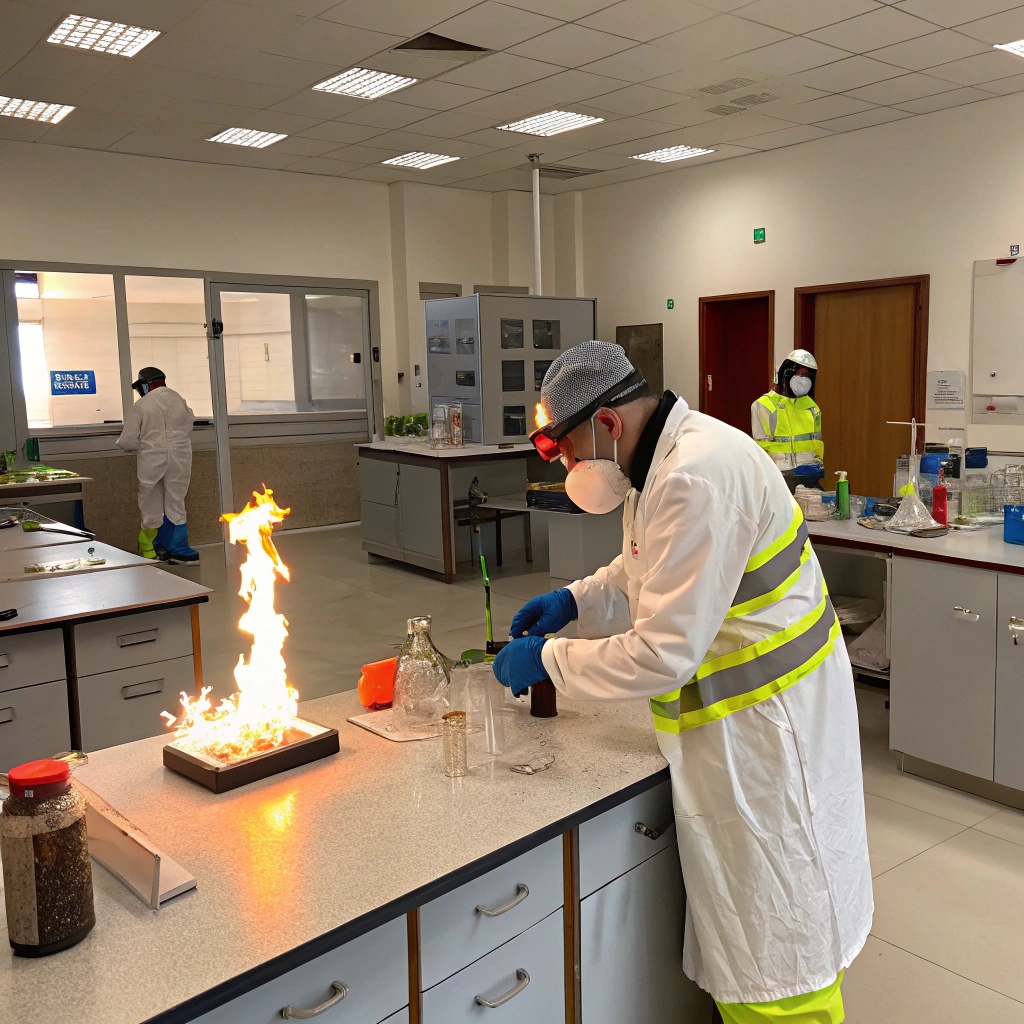Table of Contents
What Is the Difference Between Flammable and Combustible Storage? A Complete 2025 Guide
Storing hazardous materials in your workplace isn’t just about finding the right space—it’s about ensuring safety, compliance, and efficiency. But here’s the thing: many people confuse flammable and combustible storage. This misunderstanding can lead to serious safety risks and regulatory penalties. In this comprehensive guide, we’ll explore the key differences between flammable and combustible storage, their unique requirements, and how to ensure your workplace remains safe and OSHA-compliant. Let’s get started!
Understanding Flammable vs. Combustible: The Basics
Flammable and combustible materials are classified based on their flash point, the temperature at which a substance produces enough vapor to ignite. Here’s the breakdown:
- Flammable materials: Substances with a flash point below 100°F (37.8°C). These ignite easily at normal room temperatures.
- Examples: Gasoline, acetone, ethanol
- Combustible materials: Substances with a flash point above 100°F but below 200°F (93.3°C). These require higher temperatures to ignite.
- Examples: Diesel fuel, motor oil, kerosene
Why does this distinction matter? Because it affects how these materials must be stored to prevent accidents and ensure compliance.
Safety Standards for Flammable and Combustible Storage
- Separation of materials: Flammable and combustible items must be stored separately to prevent cross-contamination.
- Fire-rated cabinets: Use storage cabinets designed to withstand fire for specified durations.
- Clear signage and labeling: Containers must be marked with hazard symbols and warnings.
Key Differences in Standards:
- Flammable materials often require specialized cabinets with ventilation and temperature controls.
- Combustible materials may allow for less restrictive storage but still require protection from ignition sources.
Flammable Storage: What You Need to Know
Flammable materials are highly volatile and require extra precautions:
- Storage cabinets: Use OSHA-approved flammable storage cabinets with proper ventilation.
- Temperature control: Maintain stable room temperatures below the material’s flash point.
- Fire suppression systems: Ensure the area has sprinklers or extinguishers rated for chemical fires.
- Examples of storage solutions:
- Explosion-proof storage cabinets
- Ventilated lockers for small containers
Combustible Storage: Best Practices
Although less volatile than flammable materials, combustibles still pose significant risks. Here’s how to manage them:
- Storage solutions: Combustible cabinets with heat-resistant designs offer protection.
- Segregation: Avoid storing combustibles near heat sources or incompatible chemicals.
- Regular inspections: Check for leaks, damaged containers, or improper labeling.
Industries Using Combustible Storage:
- Oil and gas companies
- Manufacturing plants
- Warehousing facilities
Flammable vs. Combustible: Why It Matters
Ignoring the distinctions between these two categories can lead to serious consequences:
- Increased risk of fire: Flammable materials ignite more easily, especially if improperly stored.
- Regulatory penalties: Non-compliance with OSHA or NFPA standards can result in hefty fines.
- Real-life examples:
- A warehouse fire caused by improper storage of flammable solvents.
- Combustible material igniting due to proximity to heat sources.
Choosing the correct storage solutions can prevent these incidents and ensure workplace safety.
How to Ensure Compliance with Flammable and Combustible Storage Regulations
To stay compliant, follow these steps:
- Conduct a risk assessment: Identify all flammable and combustible materials in your workplace.
- Invest in proper storage: Purchase OSHA- and NFPA-compliant cabinets and lockers.
- Train employees: Ensure workers know how to handle, store, and label hazardous materials.
- Regular audits: Inspect storage areas for compliance with fire codes and safety standards.
Choosing the Right Storage Solutions for Your Workplace
When it comes to selecting storage solutions, quality matters. Consider:
- Flammable storage cabinets: These must have self-closing doors, ventilation options, and fire-resistant construction.
- Combustible storage options: Look for cabinets designed to handle lower-risk materials but still compliant with safety codes.
- Trusted manufacturers: Partner with suppliers experienced in OSHA and NFPA standards to ensure your cabinets meet all requirements.
Long-term success involves regular maintenance and inspections of your storage systems to ensure continued compliance.
Conclusion
Understanding the difference between flammable and combustible storage is critical for workplace safety and regulatory compliance. Flammable materials ignite more easily, requiring specialized storage, while combustibles pose less immediate risk but still need proper care. By following OSHA and NFPA guidelines, investing in high-quality storage cabinets, and training your team, you can protect your workplace and employees from unnecessary risks.
Ready to upgrade your storage solutions? Explore our range of OSHA-compliant flammable and combustible storage cabinets today to secure your workplace!




